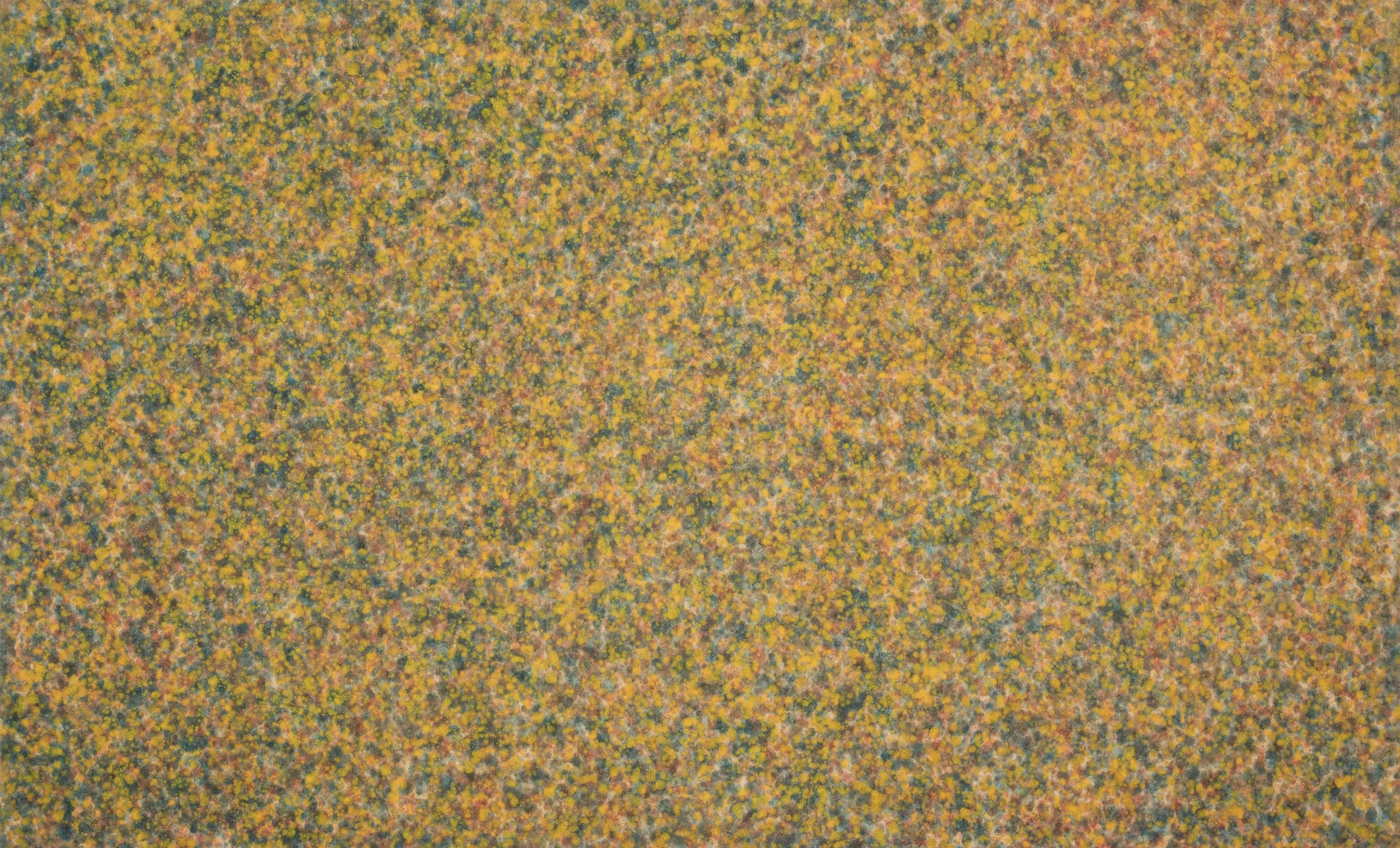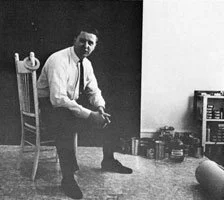HOWARD MEHRING (1931-1978)
Available Work | Biography
Biography • Howard Mehring (1931-1978)
Howard Mehring
Howard Mehring was born and raised in DC where he attended McKinley High School, the same school that fellow artists Gene Davis and Paul Reed had attended earlier. He then went to Wilson Teachers College (where Gene Davis had also studied). In his final year at Teachers College in 1952, he was introduced to Leon Berkowitz and served as a teacher student in his classes at Eastern High School. Mehring was greatly impressed with Leon Berkowitz who founded the Washington Workshop Center for the Arts with his wife Ida in 1947. Mehring took some painting classes at the Workshop and helped out as he could in the evenings. There he met and saw the work of Morris Louis, Kenneth Noland, Gene Davis, and Thomas Downing. Mehring applied for a scholarship from the National Society of Arts and Letters and received a full tuition scholarship to pursue a Masters of Fine Art. Mehring chose Catholic University over American University because Noland was teaching there. Mehring took Noland’s design course and the two became good friends sharing their thoughts on painting and progressive jazz. Mehring also became friendly enough with Morris Louis to seek his advance on painting materials. Mehring first began to pour in 1955, though at this time he was using enamel paints. Louis, Noland, and Mehring were the only abstract artists included in the Corcoran Gallery of Art’s Ninth Annual Area Exhibition in 1955.
In 1955 Howard Mehring became friends with Thomas Downing and the two shared a studio into 1956. In 1957 Mehring got his own studio which was close to the jazz club Showboat where he heard musicians like Charlie Byrd, Thelonius Monk, and Charlie Parker. He felt their improvisation and off beat notes mirrored his painting and his high-keyed colors reflected their high octave flourishes. Mehring kept that studio through 1964.
In 1959 Howard Mehring exhibited his lyrical abstractions at Origo, the Washington cooperative gallery he helped found. The gallery was short lived and he was asked to join Jefferson Place Gallery the following year, where Noland and Davis were already exhibiting. He had his first exhibition there in 1960 with all-over paintings of dripped or stippled dots in layers of color. Mehring went on to have many exhibitions at Jefferson Place Gallery, including: 1962 (broken color constructed paintings); 1965 (paintings from 1961-1962); 1969 (paintings from 1957-1959); 1970; and 1971 (Seven Paintings from 1961-62).
Kenneth Noland brought Clement Greenberg to Mehring’s studio in 1961 to see his all-over paintings. This led to Mehring’s inclusion in Greenberg’s 1964 exhibition Post-Painterly Abstraction at Los Angeles County Museum of Art. Mehring was also invited to exhibit in The Carnegie International in 1961. The same year Mehring was awarded a Woodward Foundation Grant to spend 40 days in Europe which he used to visit Paris, Florence, and Rome. Impressed with all the historic art, Mehring returned to Europe every other year until 1976. Mehring felt the Italian color of Botticelli, Bronzino, Fra Filippo Lippi, Titian and Fra Angelico clarified his own thoughts on dappled color.
In 1962, Mehring used his dappled color in geometric arrangements. He was not pleased with the soft edges of taping so he cut his canvases and applied them to the main canvas to have a physical edge between each color shift. The works were always symmetrical. In 1963, the works had “E”, “L” or “W” shapes. In 1965, Mehring moved to more saturated, uniform color in his “T” and “Z” paintings. Mehring had his first New York exhibition at A. M. Sachs in 1965 followed by solo exhibitions in 1966, 1968, and two in 1970.
Howard Mehring gave up painting in 1968. In the article “Artists on Their Art” in Art International (May 1968), Mehring summed up his work with the following:
Since 1959 I have been concerned with the problem of using color in rhythm. From 1959 to 1960 the dot of color was used in rhythm with an all-over image, often minimal as in the white and pastel paintings of that period. In 1961 I began using geometric images expressed through areas of small fused dots. From 1961 to 1965 the images were symmetrical, using back-to-back E’s or L’s for example. The 1962 paintings used squares and chevron shapes. The new work is tending to be less symmetrical and it is rhythmical in an on-beat, off-beat sense. That is about all I wish to say about my work as I feel that a conscious formalizing of concepts tends to interfere with the process of working, which is intuitive and flows from the unconscious.
The Corcoran Gallery of Art gave Howard Mehring a full retrospective in 1977 with a lengthy text and a complete chronology of his life. He unexpectedly passed away a few months later at the age of 47.
Howard Mehring’s work can be found in many public collections, including: the Chrysler Museum, Norfolk, VA; the Solomon R. Guggenheim Museum, New York; the Museum of Modern Art, New York; the Oklahoma City Museum of Art, OK; the Hirshhorn Museum and Sculpture Gardens, Washington, DC; the Phillips Collection, Washington, DC; the National Gallery of Art, Washington, DC; the Smithsonian American Art Museum, Washington, DC; among others.



